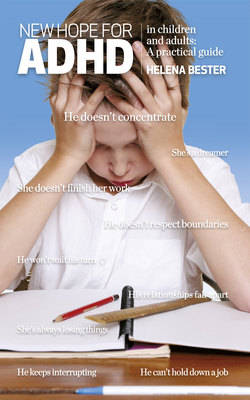Читать книгу New hope for ADHD in children and adults - Helena Bester - Страница 11
Questionnaire (behavioural checklist)
ОглавлениеThe questionnaire or behavioural checklist which follows is based on the Connors questionnaire in which the questions are based on the symptoms according to which ADHD is diagnosed. A number of similar questionnaires are available from schools and practices. The Connors questionnaire is also commonly used to determine the effectiveness of medication. The child’s behaviour is assessed in terms of criteria for identifying ADHD as contained in the DSM (Diagnostic and Statistical Manual of Mental Disorders) – these are the guidelines of the American Psychiatric Association for the diagnosis of psychiatric conditions. The previous version was known as DSM-4-TR. DSM-5 was published in June 2013. Although the diagnostic criteria are the same in the previous and current versions of the DSM, the criteria are now explained using examples that are more relevant to the behaviour of teenage and adult ADHD sufferers.
The questionnaire will give you a good indication of whether your child is an ADHD sufferer. It is usually completed by a parent, as well as an educator who knows the child well. Sometimes a child’s behaviour at home differs markedly from behaviour at school. When this is the case, other factors may be at play. Bear in mind that the questionnaire which follows summarises the symptoms in ADHD children. The precise description of the diagnostic criteria according to the DSM-5 follows later.
Read the statements and circle the number that, in your opinion, most accurately indicates the frequency of the particular behaviour. Also indicate under “Yes” or “No” whether, in your view, the behaviour is problematic for a child of her or his particular age.
Evaluation key
1 – Never
2 – Seldom
3 – Sometimes
4 – Often
5 – Always
Count the number of responses you have marked as “yes” in the “Problematic” column. If for items 1-9 there are six or more “yes” responses that you have rated with a 4 or 5, the child you have evaluated has an ADHD profile. The same applies to items 10-18.
Now add up the evaluation rates of the “yes” items:
Total A: Items 1-9 (4 or 5 and “Yes”)
Total B: Items 10-18 (4 or 5 and “Yes”)
If Total A or Total B is 24 or more, and that score is representative of the behaviour of the child in at least two functioning areas (for example, at home and at school), the child has enough ADHD symptoms for a diagnosis.
The behavioural criteria for items 1-9 on the questionnaire relate to symptoms of inattentiveness or poor concentration. The behavioural criteria for items 10-18 relate to symptoms of hyperactive and impulsive behaviour. This means that a child may, for example, have a serious concentration problem without being hyperactive. We’ll take a closer look at various types of attention-deficit disorder in chapter 2.
The main purpose of this and other similar questionnaires is to be used as an aid by parents, teachers and therapists. Sometimes it is used to calculate percentages of ADHD behaviour. I am sceptical about this, because all the items are then usually brought into the equation, when we ought only to consider those characteristics that create difficulties in adaptation and are not age-appropriate. I’m also hesitant about stereotyping children by allocating a number to them.
According to the guidelines of the new DSM, the clinician making the diagnosis is expected to indicate the level of severity of the disorder. It should be specified whether the person suffers from a “mild”, “moderate” or “severe” degree of ADHD.
I trust that by now you have a good understanding of the symptoms and general image of ADHD. We’ll tackle the rest step by step.
